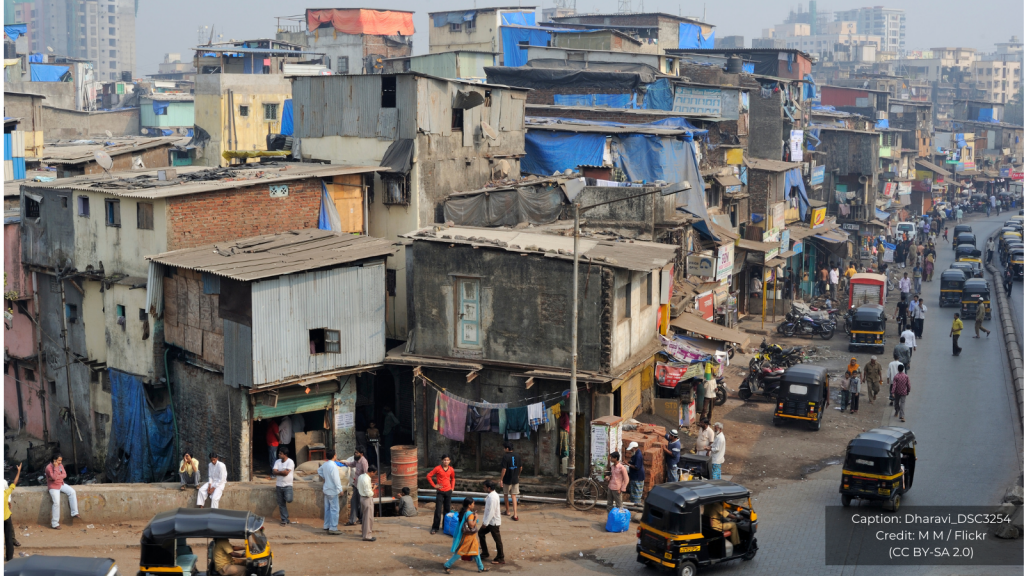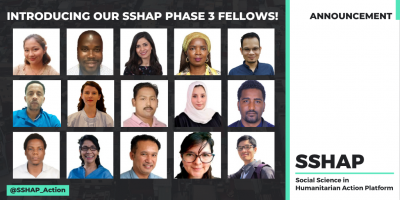65 million Indians reside in urban slums. These densely populated informal settlements, which house 22% of India’s population, were deeply affected by the first and second Covid-19 waves. With no security blanket and inadequate health infrastructure, urban slum residents were left to fend for themselves in the wake of lockdowns and suspended economic activity. The global pandemic forced countries to rethink the implementation of public health interventions. During these difficult times, India’s grassroots organisations engaged with local communities for emergency preparedness and resilience building.
Janbhagidari, which translates to community engagement, is the process of individuals forming voluntary groups within settlements, which creates community-level ownership of public health interventions. This group works towards common causes: spreading awareness, mobilising community members, and initiating collective action for disaster management. Janbhagidari is not a new concept in India. The approach was adopted in the late 1990s when peer-to-peer learning and targeted community-level interventions were designed to tackle HIV/AIDS in India. Various national and state programmes have since mobilised community support to form Self-Help Groups (SHG) and in water and health programmes like Swachh Bharat Mission and National Health Mission. Civil Society Organisations (CSOs) use Janbhagidari to improve accountability amongst citizens. The approach was used aptly to respond to Covid-19.
During the pandemic, we worked closely as volunteers with CSOs in Ahmedabad, Jaipur, Nagpur, Sangli and West Delhi. During this time, especially through lockdowns, our country saw a meteoric rise in Janbhagidari initiatives to support marginalised communities. Based on our experiences and larger research on community engagement, we have identified three key lessons from Janbhagidari.
1. Leveraging trust and togetherness in the community
While historic tensions exist, close-knit ties based on religion, caste, gender, or occupation help the settlements function. How residents depend on each other in times of crisis also brings them closer. CSOs such as Urban Management Centre, Saath and the Centre for Advocacy and Research (CFAR) utilised this togetherness during crisis to boost Janbhagdari. They achieved this by:
- Identifying leaders within the community: CSOs reached out to local communities to form Slum-Level Committees (SLC) and mentored them. This enabled community leaders to effectively lead discussions, tackle disagreements, and make inclusive decisions.
- Collective action and mobilisation: Committee members worked with CSOs towards the common goal of mapping Covid-19 cases and delivering essential supplies like food, medicines, and sanitation kits to patients in quarantine and their isolated family members. During the second wave, committees organised vaccination centres and regular cleaning of public toilets within the settlements in coordination with SHGs and Urban Local Bodies (ULBs).
Jagdishbhai, a rickshaw driver and an active local leader in Ahmedabad illustrates the use of drawing on relationships:
“We faced shortage of food and basic amenities during the lockdown in the first wave of Covid-19. I convinced my community members to set up a kitchen and got permit from the Municipal Corporation to ferry dry ration and utensils in my rickshaw. We managed to provide cooked meals to more than 100 households. Other settlements also approached me for establishing more community kitchens. We managed to run four kitchens during the entire lockdown period with daily servings to 600 households.”
2. Community-led planning and designing of Settlement Improvement Plans (SIP) for Covid-19 response
The population of urban informal settlements typically vary between 300 to 20,000 people, with some exceptions, such as Dharavi in Mumbai, housing over a million people. These settlements have been historically ignored, and are difficult to navigate for external health workers and officials due to poorly-built, congested entrances, limited refuse removal, and frequent evictions which result in address changes. During the first Covid-19 wave, government officials found it difficult to reach vulnerable communities and provide aid. CSOs played a pivotal role in leveraging their strong networks with the slum residents.
SIPs were developed in consultation with other community members. Through SIPs, communities identified challenges and solutions, and delegated responsibilities based on common consensus. The process helped residents see ULBs and CSOs as important stakeholders and improved the accessibility of settlements.
The following tools were used by the SLCs to map key civic concerns while developing SIPs:
- Social Mapping: No one understands the complexities of informal settlements better than the residents themselves. A social map[i] depicts these complexities through one visual tool, designed by the communities. Social mapping has helped ULBs undertake targeted planning and served as an aid for front-line workers to locate patients.
- Community monitoring tools: With the help of CFAR, informal communities in Jodhpur and Sambalpur began using a daily monitoring tool – Bindi (a dot) Chart – to assess the quality of service delivery, which varied greatly during Covid-19.[ii] It served as a simple and powerful way for community members to monitor essential services using a colour code based on their level of satisfaction. The emerging colour pattern helped ULBs understand the trends in service quality. This also enabled dialogue between slum residents and ULBs to work together for improving municipal services.
3. Using adversity as an opportunity: Women leaders taking charge
Subjected to patriarchal oppression from childhood, with their economic contributions ignored throughout adulthood too, women in urban informal settlements tend to have less power and autonomy. Despite these barriers, women became leaders in the Covid-19 response.
Initially, women participated in meetings with hesitation, following traditional practices (hijab/purdah/ghunghat) of hiding their faces and avoiding sitting near men. However, the increasing absence of men in meetings due to their lack of interest provided women with the platform engage and provide their suggestions. Making the most of the increase in participation, CSOs encouraged them to lead the Janbhagidari initiatives, representing their settlements in meetings with the ULBs.
An example of this was seen in Hatsal, New Delhi, where 18-year-old Gulnaz and her fellow SHG members, learnt to sew during the first wave. They used this skill to distribute masks to over 500 community members. When schools were closed during the second wave, Gulnaz then started teaching children from families who were unable to afford devices for online classes. Gulnaz made sure that the children in her community were not losing out on education because of their socio-economic position.
Janbhagidari as a model for future public health interventions
To provide equitable access to services in urban informal settlements, it is important to reach the vulnerable and marginalised residents. The tried and tested method of community engagement, Janbhagidari, has created a community-led approach to prevention and disease control in India, despite the huge diversity of population and geographies. The core beliefs of the multi-dimensional approach involve trust-building, behaviour change, and communication. Community engagement uproots power structures and shapes social dynamics by giving community members and women leaders the authority to make decisions. Stakeholders worldwide are encouraged to learn from what has worked in India: this involves contextualising their work, utilising innovative and participatory tools, and continuously centring vulnerable and marginalised voices when implementing public health interventions.
[i] Social map is an effective tool that represents habitation patterns, nature of housing and social infrastructure (health centre, schools), roads, WASH facilities, individual households with toilet facilities, natural water bodies and littering, open defecation and wastewater stagnation spots that exists in the settlement.
[ii] The Bindi Chart enlists municipal services that are being provided in the settlement such as sanitation and waste management, water supply, faecal sludge and septage management etc.




